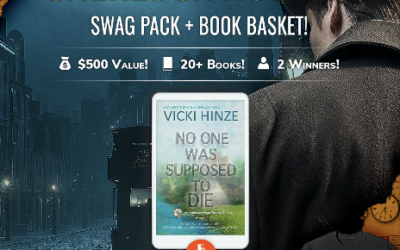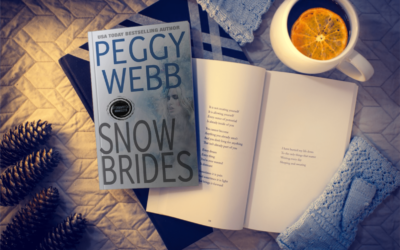Vicki Hinze © 2003-2011
The ending of a novel is the summation; the portion of the book where what the characters have experienced in the novel’s events lead to a conclusion that is logical and in a sense inevitable.
The character’s journey is done. S/he is a different person than s/he had been at the onset. Stronger. Wiser. Or weaker, broken. Good or bad, for better or worse, the character is different, and that difference is a direct result of what s/he did or experienced in the novel.
Like the beginning and the middle of a novel, the ending has specific responsibilities—to the book and to the reader. Here are some considerations of what should and should not be included. (These are direct editorial citations of reasons for rejections, though as always, remember that these are rules of thumb. There are NO absolutes in writing. For every rule declared, there is a published example of it being broken.)
The ending of the novel introduces no new characters. Any character depicted
here should have been introduced earlier in the book, if only briefly. A good rule of thumb is to follow the Rule Of Three: Introduce, Reinforce, Utilize.
You introduce the character early on. Later in the book, you remind the reader of this character, or have a brisk second appearance to reinforce memory of this character and remind the reader who s/he is and how s/he relates to the story. Still later in the book, the character performs a specific story task.
This is a great way to foreshadow coming events. It’s also an excellent way to get all the novel pieces puzzled together snugly—intertwined—so you never hear editors use words like convoluted, contrived, or coincidence—(deadly words in fiction writing)—in connection with your books.
The end is the place where the writer ties up all loose ends. Threads created within the book should be resolved–even if that resolution is that the character recognizes that s/he will never know the truth or that a concrete resolution is not possible.
Even in those situations—where there is no resolution—the character must know and accept it. That might mean that the character “thinks” there is no answer but s/he will keep searching for one, or that s/he acknowledges an answer will never be found and s/he is at peace with that. Even grudging acceptance is a resolution. The key is in addressing the issue. Pulling the thread through and having the character deal with it. This eliminates “loose threads” or “dangling threads” from your work.
The end answers all questions, or the character determines there is no answer. Again, you deal with the issues. The character confronts and settles them, if only in his/her mind.
The end resolves all of the lesser conflicts before resolving the major conflict. In a series on conflict, we discussed this. You build conflicts through the novel. With each successive chapter, the conflict becomes stronger, more formidable, more difficult to master.
You start out at ground zero and as you chart the conflict in each chapter, you move consistently higher into a spike. While you might grant time for the reader to “catch their breath,” you don’t introduce a lesser conflict than the preceding conflict. You build on the foundation. Little dips, for breathers, yes, but to lower the obstacles and/or the risks to the character diminishes suspense and deflates the strength of the event—it weakens the book.
Resolving the conflicts is done in reverse order. Little conflicts first, and then the largest, overall novel conflict. The reason you do this is because once the major conflict is resolved, the book is over. (The novel’s spine is the book.) If you resolve the “major” conflict and haven’t yet resolved the minor ones, then you’ve got unanswered questions, unresolved issues, and nothing to sustain them because you’ve removed the spine supporting them.
The end reveals all of the lesser truths that depict character growth that has occurred during the course of the novel as a result of experiences incurred by the character.
That growth is the tool that grants the character that seemingly unobtainable quality which enables him/her to attempt the final (and major) conflict and emerge victorious.
It is here that the character faces the black moment—that bleak time in the novel when it seems all hope of success is gone–and s/he either achieves the novel goal or decides that the resolution to the ultimate conflict is acceptable to him/her. (The satisfying ending versus the happy ending.)
If you look closely, you’ll see that this is the internal conflict that resolves parallel to the external conflict. Typically, we see the lesser conflicts resolved, the major conflict resolved, and then a short—usually a page or two—that evidences the resolution of the internal conflict.
Writers should be cautious in this critical portion of the book. We tend to want to linger and go on a while. But as a rule, we should fight the urge. While it’s understandable—we have spent months with this book and these characters—we need to recall that once the spine is broken—the major conflict resolved—then a very brief wrap-up of is all we need. To give in and linger earns comments such as: “the ending drags.”
That’s dangerous. Think about it. The reader reads, goes on this journey, this adventure, and snatches victory from the jaws of defeat. Then s/he reads the lingering end. The powerful impact of the success, the adventure is diminished under the weight of the lingering.
That’s not the emotional impact we want we leave readers with; we want them satisfied, but wanting more. We want them to close the cover with that emotional sense of empowerment, savoring the victory.
Now, just as each novel has a beginning, middle, and end, so does each chapter and scene. Apply the scene-element tests we discussed to the scenes, the chapters, and then to the novel as a whole. In respecting what is typical and atypical for the beginning, middle, and end, you can depict your work in its strongest light.




